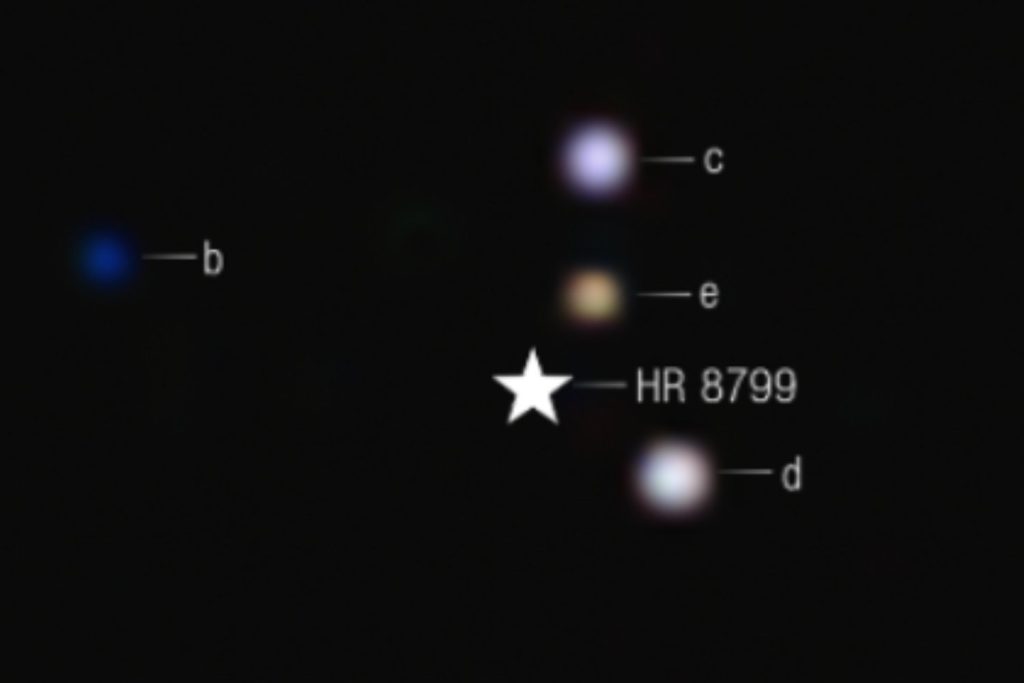NASA’s Webb Space Telescope has captured direct images of carbon dioxide in a planet beyond our solar system for the first time.
The images feature HR 8799, a multiplanet system 130 light-years from Earth. The discovery not only reveals a chemical compound essential on Earth for processes including photosynthesis and the carbon cycle, but also indicates that gas giant planets elsewhere in the galaxy formed in a similar way to our local giants, Jupiter and Saturn. The team’s analysis of the Webb imagery was published today in The Astrophysical Journal.
“By spotting these strong carbon dioxide features, we have shown there is a sizable fraction of heavier elements, such as carbon, oxygen, and iron, in these planets’ atmospheres,” said William Balmer, an astrophysicist at Johns Hopkins University and lead author of the study, in a university release. “Given what we know about the star they orbit, that likely indicates they formed via core accretion.”
The HR 8799 system is roughly 30 million years old, making it downright infantile in the scales of deep time, as it only began about halfway between the dinosaurs being wiped out and the modern day. (Our own solar system is about 4.6 billion years old).
Because of its nascent development, the planets in the HR 8799 system are seen emitting lots of infrared light—perfect emissions for the Webb Space Telescope, which images at infrared and near-infrared wavelengths. By analyzing these emissions, scientists can determine how the planets formed and uncover other characteristics of these distant worlds.
“Our hope with this kind of research is to understand our own solar system, life, and ourselves in comparison to other exoplanetary systems, so we can contextualize our existence,” Balmer said in the release.
“We want to take pictures of other solar systems and see how they’re similar or different when compared to ours,” they added. From there, we can try to get a sense of how weird our solar system really is—or how normal.”
Large planets like Jupiter form one of two ways, as far as planetary scientists know: They either develop solid cores that then glom on gas gravitationally, or they collapse quickly into a planet from the disk of cooling material around a young star.
Based on its analysis, the team believes the four planets in HR 8799 formed from the bottom up, and studying more Webb observations could reveal how common—or rare—that approach to world-building is.
 divpadding-right:0!important;padding-bottom:10px.ml-form-formContent.horozintalForm .ml-button-horizontalwidth:100%!important.ml-form-formContent.horozintalForm .ml-button-horizontal.labelsOnpadding-top:0!important
divpadding-right:0!important;padding-bottom:10px.ml-form-formContent.horozintalForm .ml-button-horizontalwidth:100%!important.ml-form-formContent.horozintalForm .ml-button-horizontal.labelsOnpadding-top:0!important



